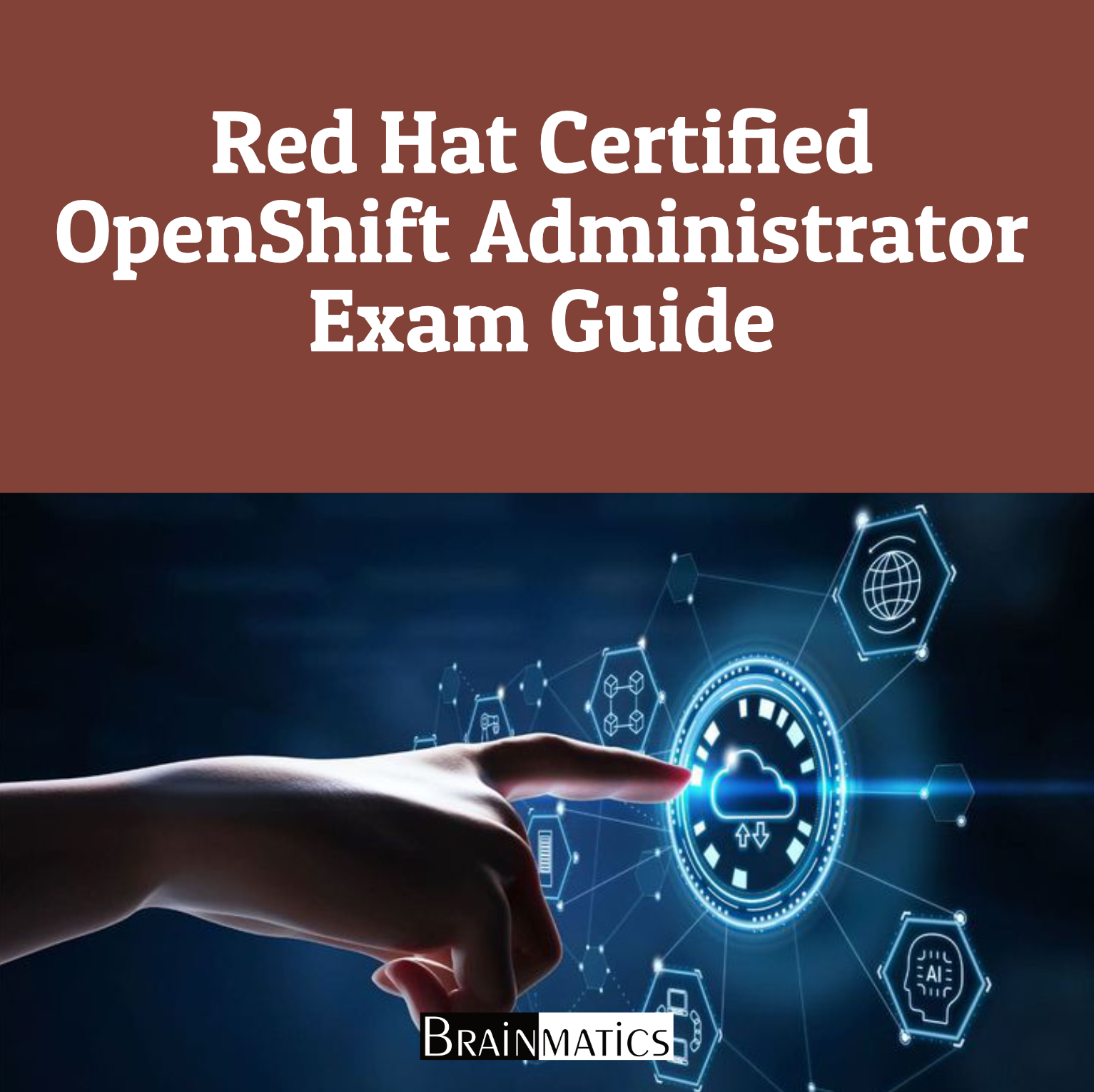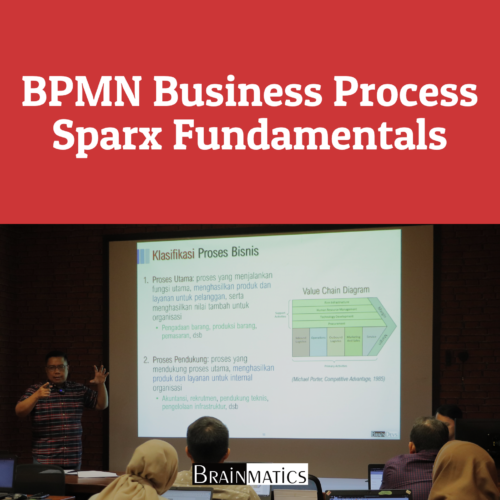
Red Hat Certified OpenShift Administrator Exam Guide dirancang untuk membekali peserta dengan keterampilan yang dibutuhkan dalam mengelola dan mengonfigurasi OpenShift Container Platform. Peserta akan belajar bagaimana menggunakan web console dan command-line interface (CLI) untuk mengelola klaster OpenShift, termasuk cara mengatur proyek, memantau log, serta menilai kesehatan klaster. Selain itu, peserta akan mempelajari teknik troubleshooting untuk menangani masalah pada pods, nodes, serta berbagai komponen lainnya dalam OpenShift. Dengan pemahaman mendalam tentang manajemen sumber daya dan pengoperasian OpenShift, peserta akan lebih siap menghadapi tantangan dalam lingkungan produksi berbasis kontainer.
Selain manajemen klaster, pelatihan ini juga mencakup implementasi dan pengelolaan aplikasi dalam OpenShift. Peserta akan belajar cara menerapkan aplikasi dari berbagai sumber seperti resource manifests, Helm charts, dan OpenShift templates. Selain itu, peserta akan memahami cara mengelola penyimpanan dengan persistent volumes, storage classes, serta konfigurasi secrets dan config maps untuk meningkatkan keamanan aplikasi. Pelatihan ini juga membahas teknik penskalaan aplikasi untuk memenuhi permintaan yang meningkat, serta metode pengelolaan pembaruan aplikasi, termasuk rollback dan manajemen image streams.
Di bagian akhir, peserta akan mempelajari aspek keamanan dalam OpenShift, termasuk autentikasi dan otorisasi, pengelolaan service accounts, serta penerapan kebijakan jaringan untuk mengamankan lalu lintas internal dan eksternal klaster. Pelatihan ini juga mencakup konfigurasi Operators, penegakan kuota sumber daya untuk proyek, serta penerapan security context constraints guna memastikan aplikasi berjalan dengan aman. Dengan mengikuti pelatihan ini, peserta akan memiliki keterampilan yang diperlukan untuk mengelola lingkungan OpenShift secara efisien dan siap menghadapi ujian sertifikasi Red Hat Certified OpenShift Administrator.
OBJECTIVES
1. Memahami Dasar-dasar OpenShift dan Manajemen Klaster
2. Menerapkan dan Mengelola Aplikasi dalam OpenShift
3. Mengelola Pembaruan dan Keamanan Aplikasi
4. Mengelola Autentikasi, Otorisasi, dan Jaringan OpenShift
5. Menggunakan OpenShift Operators dan Mengaktifkan Self-Service untuk Pengguna
AUDIENCE
1. System Administrator
2. Software Engineer
3. Security Engineer
PREREQUISITES
1. Pemahaman Dasar Linux dan Administrasi Sistem
2. Pengalaman dalam Docker dan Kubernetes
CONTENT
1. Manage OpenShift Container Platform
1.1. Use the Web Console to Manage and Configure an OpenShift Cluster
1.2. Use the Command-Line Interface to Manage and Configure an OpenShift Cluster
1.3. Query, Format, and Filter Attributes of Kubernetes Resources
1.4. Import, Export, and Configure Kubernetes Resources
1.5. Locate and Examine Container Images
1.6. Create and Delete Projects
1.7. Examine Resources and Cluster Status
1.8. View Logs
1.9. Monitor Cluster Events and Alerts
1.10.Assess the Health of an OpenShift Cluster
1.11.Troubleshoot Common Container, Pod, and Cluster Events and Alerts
1.12.Use Product Documentation
1.13.Managing Nodes
1.14.Managing Pods
1.15.Managing Projects
1.16.Node-level troubleshooting
1.17.ODF troubleshooting
2. Deploy Applications
2.1. Deploy Applications from Resource Manifests
2.2. Use Kustomize Overlays to Modify Application Configurations
2.3. Deploy Applications from Images, OpenShift Templates, and Helm Charts
2.4. Deploy Jobs to Perform One-Time Tasks
2.5. Manage Application Deployments
2.6. Work with Replica Sets
2.7. Work with Labels and Selectors
2.8. Configure Services
2.9. Expose Both HTTP and Non-HTTP Applications to External Access
2.10.Work with Operators Such as MetalLB and Multus
3. Manage Storage for Application Configuration and Data
3.1. Create and Use Secrets
3.2. Create and Use Configuration Maps
3.3. Provision Persistent Storage Volumes for Block and File-based Data
3.4. Use Storage Classes
3.5. Manage Non-Shared Storage with Statefulsets
4. Configure Applications for Reliability
4.1. Configure and Use Health Probes
4.2. Reserve and Limit Application Compute Capacity
4.3. Scale Applications to Meet Increased Demand
5. Manage Application Updates
5.1. Identify Images Using Tags and Digests
5.2. Roll Back Failed Deployments
5.3. Manage Image Streams
5.4. Use Triggers to Manage Images
6. Manage Authentication and Authorization
6.1. Configure The HTPasswd Identity Provider for Authentication
6.2. Create and Delete Users
6.3. Modify User Passwords
6.4. Create and Manage Groups
6.5. Modify User and Group Permissions
7. Configure Network Security
7.1. Configure Networking Components
7.2. Troubleshoot Software Defined Networking
7.3. Create and Edit External Routes
7.4. Control Cluster Network Ingress
7.5. Secure External and Internal Traffic Using TLS Certificates
7.6. Configure Application Network Policies
8. Enable Developer Self-Service
8.1. Configure Cluster Resource Quotas
8.2. Configure Project Quotas
8.3. Configure Project Resource Requirements
8.4. Configure Project Limit Ranges
8.5. Configure Project Templates
9. Manage OpenShift Operators
9.1. Install an Operator
9.2. Delete an Operator
10. Configure Application Security
10.1. Configure and Manage Service Accounts
10.2. Run Privileged Applications
10.3. Create Service Accounts
10.4. Manage and Apply Permissions Using Security Context Constraints
10.5. Create and Apply Secrets to Manage Sensitive Information
10.6. Configure Application Access to Kubernetes Apis
10.7. Configure Kubernetes Cronjobs
Course Features
- Lectures 13
- Quizzes 2
- Duration 40 hours
- Skill level Intermediate
- Language English
- Students 7
- Certificate Yes
- Assessments Yes









